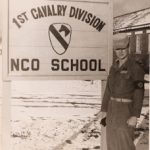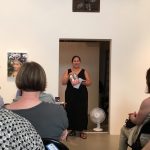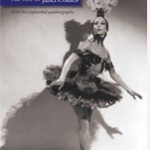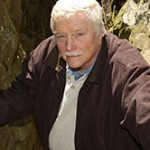
April 6, 1917: The United States entered World War I, when the U.S. Senate voted 82–6 to declare war on Germany. President Woodrow Wilson enacted conscription to recruit thousands of eligible young men into military service. Most of the approximately 12,000 Native Americans who enlisted were volunteers, as Native Americans were, largely, not yet citizens of the United States. In addition to this service, Native Americans purchased approximately $25 million worth of war bonds to support the cause.
Although the Code Talkers of WWII are better known today, Natives in WWI—most notably the Choctaw—were also tasked with interrupting German spies and halting the interception of Allied communication. This was accomplished with the use of localized Native dialects, which few of the enlisted understood and none of the enemy could decipher. This would aid Allied victory as German troops no longer could predict Allied supply transport or military movements.
The Choctaw were not the only Native nation represented in military service. Other nations, such as the Anishinaabe of the White Earth Reservation, featured in Gerald Vizenor’s book, Blue Ravens, also contributed to the Allied victory.
In his historical novel, Vizenor reimagines the lives of his great uncles—brothers who served in on the battlefields of France during World War I. He follows the travels and experiences of these two soldiers, before, during the war, and after they return home. Praised as one of our most original, and outspoken, contemporary Native American authors, Vizenor’s visionary writing addresses historic events through an imaginative, postmodern aesthetic. More information can be found at our Blue Raven reader’s companion.
Below: A video of Vizenor lecturing on Blue Ravens and WWI.
The story of Vizenor’s uncles will continue in his next novel, Night of Tributes, due out in 2018. The brothers, now combat veterans, join the Bonus Army to march on Washington DC) in his next novel, Night of Tributes, due out in 2018.
Click on the photos below to enlarge and access the captions.











 Gerald Vizenor was recently welcomed by Birchbark Books for a reading from his new book
Gerald Vizenor was recently welcomed by Birchbark Books for a reading from his new book 












 GERALD VIZENOR is Professor Emeritus of American Studies at the University of California, Berkeley. His novels Shrouds of White Earth and Griever: An American Monkey King in China both won the American Book Award; Griever also received the New York Fiction Collective Award. He is currently writing his sequel to
GERALD VIZENOR is Professor Emeritus of American Studies at the University of California, Berkeley. His novels Shrouds of White Earth and Griever: An American Monkey King in China both won the American Book Award; Griever also received the New York Fiction Collective Award. He is currently writing his sequel to 















